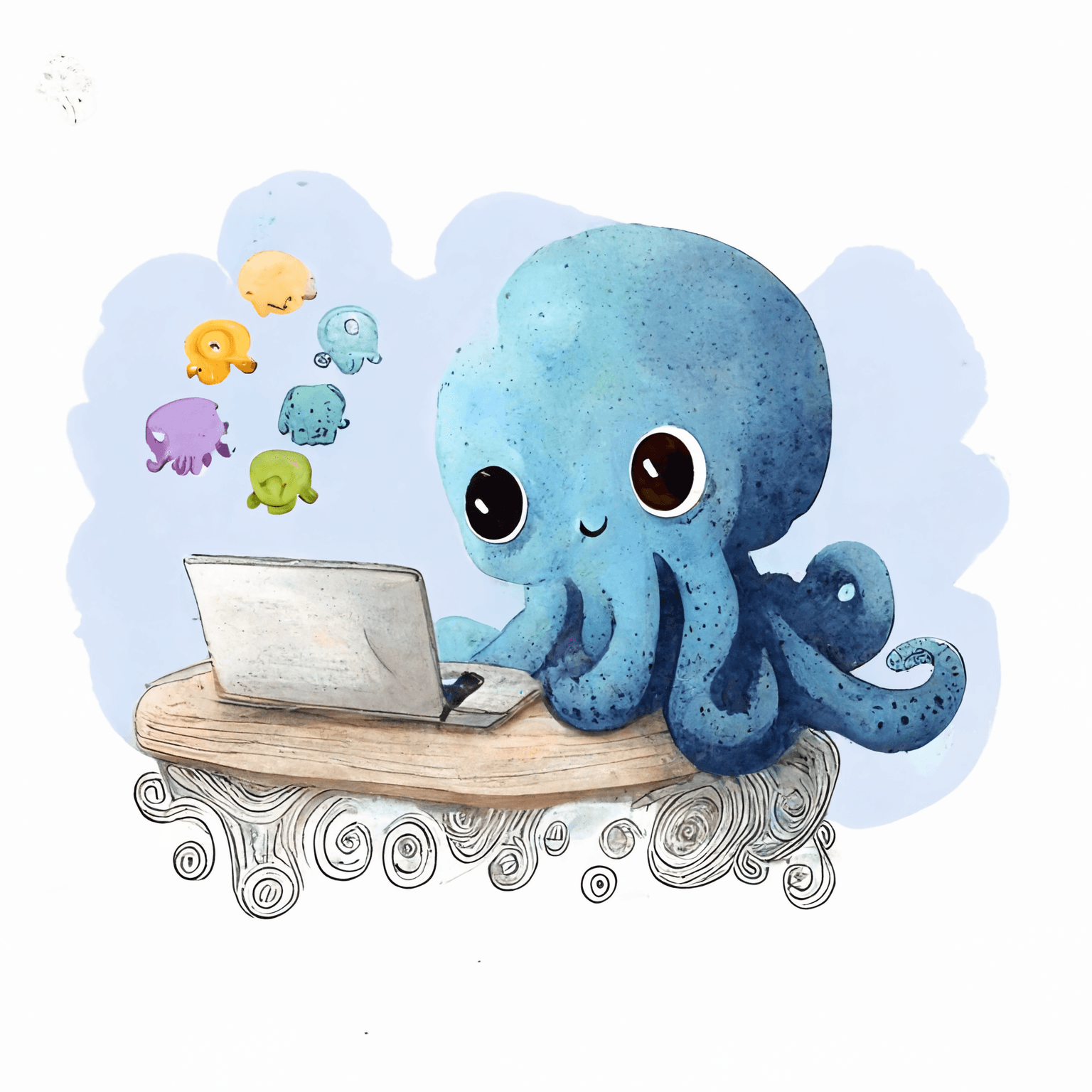In the magical world of children's literature, the leap from manuscript to published book is filled with both excitement and challenges. Print-on-Demand Children's Books have revolutionized this journey, offering authors a seamless path to bring their stories to life.
This guide ventures into the heart of POD platforms, shedding light on how they empower authors of illustrated books to publish with ease, without the traditional hurdles of inventory and upfront costs. We'll compare various services, delve into the specifics of publishing illustrated content, and offer insights into making your book a success. Whether you're new to the scene or looking to switch to print-on-demand, our exploration will equip you with the knowledge to navigate this vibrant landscape, ensuring your stories captivate the imaginations of young readers everywhere.
The Rise of Print-on-Demand Publishing
The advent of print-on-demand (POD) technology has been a revolutionary force in the publishing industry, especially for children's book authors. This innovation has shifted the traditional publishing model, allowing for books to be printed as orders come in, eliminating the need for large upfront investments and the risk of unsold inventory. For children's books, which often require intricate, colorful illustrations, POD has made publishing more accessible and financially viable.
Before POD, authors faced barriers like bulk printing and warehousing, making the journey to publication daunting and expensive. Now, POD has opened the doors for a diverse range of stories to be told, enabling authors to reach global audiences with ease. This shift has not only democratized publishing but also enriched the world of children's literature with a wider array of narratives and perspectives. The rise of POD is a testament to the changing landscape of book publishing, offering a more inclusive and flexible approach that benefits authors and readers alike.
Understanding Print-on-Demand for Children's Books
Print-on-demand (POD) has revolutionized the publishing process for children's books, making it an indispensable tool for authors and illustrators. At its core, POD is a straightforward yet transformative approach: books are printed individually in response to each order. This method contrasts sharply with traditional publishing, which necessitates large, costly print runs and the logistical challenge of storing and distributing unsold copies.
For children's book authors, particularly those specializing in illustrated works, POD is a game-changer. It allows for the production of vibrant, full-color books without the prohibitive costs associated with traditional printing methods. This is especially crucial for illustrated children's books, where quality and color fidelity are paramount to bringing stories to life.
Moreover, POD offers unparalleled flexibility. Authors can update their work easily, whether to correct a typo or refresh illustrations, ensuring that their books are always in their best form. This adaptability extends to experimenting with different formats and sizes, enabling authors to find the perfect fit for their stories and audiences.
The impact of POD on self-publishing of illustrated and children's books cannot be overstated. It has lowered the barriers to entry, allowing more authors to share their stories. By eliminating the financial risks of unsold inventory and reducing upfront costs, POD has empowered authors to focus on what truly matters: crafting engaging, imaginative stories for young readers.
Choosing the Right Print-on-Demand Platform
Selecting the ideal print-on-demand (POD) platform for your children's book is a critical step in the self-publishing journey. The right platform can enhance your book's quality, reach, and profitability. Here are key factors to consider:
- Print Quality: Essential for children's books, where vibrant illustrations are key.
- Trim Sizes: The platform should offer sizes that match your vision for the book.
- Cost: Understand the cost per book and any additional fees to gauge profitability.
- Distribution: Look for platforms with wide distribution channels to maximize reach.
- Ease of Use: A user-friendly platform simplifies the publishing process.
Popular POD Platforms for Children's Books
IngramSpark
- Trim Sizes: Wide range, including these popular children's book sizes:
- 7.5" x 9.25" (portrait)
- 8" x 8" (square)
- 8" x 10" (portrait)
- 8.5" x 8.5" (square)
- 11" x 8.5" (landscape)
- Pros: Extensive distribution network; high-quality color printing.
- Cons: Setup fees have recently been eliminated, but historically were charged and may return, along with change fees.
- Limitations: The initial cost may be a barrier for some authors.
Amazon - Kindle Direct Publishing (KDP)
- Trim Sizes: Offers a variety of sizes, though more limited for large-format children’s books, including these popular children's book trim sizes:
- 7.5" x 9.25" (portrait)
- 8" x 10" (portrait)
- 8.5" x 8.5" (square)
- Pros: Integration with Amazon; no setup fees.
- Cons: Limited distribution outside Amazon; print quality may vary.
- Limitations: Heavy reliance on Amazon for sales. Hardcover unavailable for books with a page count of less than 75.
Blurb
- Trim Sizes: Excellent for large and custom sizes, including square formats ideal for picture books. Click here for Blurb's full trim size chart.
- Pros: Superior print quality; great for high-quality illustrations.
- Cons: Higher cost per unit; limited distribution options.
- Limitations: Costs may impact pricing strategy.
Lulu
- Trim Sizes: Good variety, including options for hardcover children’s books, including:
- 11" x 8.5" (landscape)
- 9" x 7" (landscape)
- 7.5" x 7.5" (square)
- 8.5" x 8.5" (square)
- 8.5" x 11" (portrait)
- Pros: Direct sales through Lulu’s bookstore; offers hardcover options.
- Cons: Inconsistent print quality; distribution not as extensive as IngramSpark.
- Limitations: Print quality issues may affect highly illustrated books.
When choosing a POD platform, consider how each factor aligns with your goals for your children's book. The right choice depends on a balance of quality, cost, distribution, and the specific needs of your project. By carefully evaluating each platform, you can find the best partner to bring your children's book to life and into the hands of eager young readers.
Navigating the Technicalities of POD
Understanding the technical aspects of print-on-demand (POD) is crucial for children's book authors, especially when dealing with illustrated content. Here’s a concise guide to help you navigate these waters smoothly:
Formatting Your Book
- Digital Files: Most POD platforms require PDF files for both the cover and interior pages. Ensure your files meet the platform's specifications for dimensions, bleed, and resolution.
- Resolution: Illustrations should be high resolution, typically 300 dpi (dots per inch), to ensure they print clearly and vibrantly.
- Color Space: Check if the platform prefers CMYK or RGB color models. CMYK is standard for print but some platforms accept RGB, which is used for digital images.
Choosing Trim Size
Select a trim size that complements your book’s layout and is supported by your chosen POD platform. Popular sizes for children’s books include 8” x 10” for portrait and 8.5” x 8.5” for square formats.
Understanding Print Options
- Paper Type: Options usually include matte, glossy, and uncoated. Glossy finishes are often favored for children's picture books because they make colors pop.
- Binding: Hardcover (case laminate or jacketed) and paperback are common choices. Hardcover can add value and durability to children’s books.
- Proof Copies: Before finalizing your book, order a proof copy. This allows you to check the physical product for any issues with color, binding, or overall print quality.
Revisions and Updates
One of the advantages of POD is the ability to update your book easily. If you spot a typo or want to refresh illustrations, you can upload a new file. However, be aware of any fees associated with making changes.
ISBN and Copyright
- An International Standard Book Number (ISBN) is essential for distribution and sales tracking. Some POD platforms offer free ISBNs, but purchasing your own gives you more control.
- Ensure your work is copyrighted before publishing. This protects your rights as an author and illustrator.
Navigating the technicalities of POD doesn’t have to be daunting. By understanding these key aspects and preparing your book accordingly, you can ensure a smooth publishing process and a final product that meets your vision. Remember, each POD platform has its own set of guidelines, so always refer to their specific requirements during the preparation of your children's book.
Maximizing Your Children's Book Success on POD Platforms
Achieving success with your children's book on print-on-demand (POD) platforms involves more than just creating a captivating story with beautiful illustrations. Here are strategic steps to enhance your book's visibility, appeal, and sales:
Optimize Your Book’s Listing
- Keywords and Categories: Use relevant keywords in your book’s title, subtitle, and description to improve its discoverability. Choose categories that best match your book’s theme and audience.
- Compelling Description: Write a captivating description that highlights the uniqueness of your story and appeals to both parents and young readers. Include any accolades or endorsements.
Leverage High-Quality Visuals
- Cover Design: Your book's cover is the first thing potential readers will see. Ensure it's professionally designed, eye-catching, and indicative of the story’s theme.
- Interior Preview: Use the “Look Inside” feature (on platforms like Amazon) to give a sneak peek of your book’s interior, showcasing your illustrations and narrative style.
Pricing Strategy
- Competitive Pricing: Research similar children's books on your chosen POD platform to set a competitive price. Consider your book's page count, printing costs, and perceived value.
- Promotions and Discounts: Utilize the promotional tools offered by POD platforms to run limited-time discounts or participate in programs that increase your book's visibility.
Collect and Showcase Reviews
- Encourage Reviews: Reviews are crucial for building credibility. Encourage readers to leave feedback on your POD platform and other book review sites.
- Utilize Social Proof: Highlight positive reviews in your marketing materials and on social media to attract new readers.
Utilize Social Media and Content Marketing
- Build an Online Presence: Create profiles on platforms where your target audience (parents, teachers, and children's book enthusiasts) is active. Share engaging content related to your book’s themes.
- Content Marketing: Start a blog, create videos, or host live readings to connect with your audience and provide value beyond just selling your book.
Engage with Your Community
- Author Events: Participate in virtual or in-person book readings, signings, and children’s events. Engaging directly with your audience can boost interest and sales.
- Networking: Connect with other children's book authors, illustrators, and industry professionals. Collaborations and cross-promotions can expand your reach.
Monitor and Adapt
- Sales Data: Regularly review your sales data and customer feedback to understand what’s working and what isn’t. Be prepared to adjust your marketing strategies and book offerings accordingly.
Maximizing success on POD platforms requires a mix of strategic planning, marketing, and community engagement. By focusing on these areas, you can increase the visibility and appeal of your children's book, turning readers into fans and boosting your sales in the competitive world of self-publishing.
Distribution and Sales Channels
Expanding your children's book's reach is crucial for its success. POD platforms offer various distribution and sales channels, each with its benefits and considerations:
- Direct Sales through POD Platforms: Most POD services offer direct sales channels, which can include their own online bookstores or listings on major retail sites like Amazon.
- Expanded Distribution Networks: Services like IngramSpark provide access to an extensive network of bookstores and libraries, increasing your book's potential reach.
- Personal Website and Social Media: Selling your book directly through your website or social media platforms can offer higher profit margins and direct engagement with your audience.
- Local Bookstores and Events: Consider partnering with local bookstores for consignment deals or participating in community events to sell your book.
Real-Life Success Stories
Many authors have found remarkable success through POD platforms, proving that with the right strategy, self-publishing can lead to widespread recognition and sales. For instance, authors like Amanda Hocking and E.L. James started with self-published eBooks and POD, eventually securing traditional publishing deals due to their online success. Children's book authors have similarly leveraged POD to reach audiences worldwide, with some seeing their books adopted into school curriculums and featured in major media outlets.
The journey of publishing a children's book has been dramatically simplified and democratized by print-on-demand technology. From crafting your story to holding the finished book in your hands, POD platforms offer a pathway to success that was unimaginable just a few decades ago. By understanding the nuances of POD, from technical requirements to marketing and distribution strategies, authors can now share their stories with a global audience without the traditional barriers of publishing.
Are you ready to turn the pages of your imagination into a beautifully printed children's book? With Made Live, your journey from storyteller to published author is just a few clicks away. Embrace the power of print-on-demand technology with us and join a vibrant community of authors who've made their publishing dreams come true. Start your free trial with Made Live today, and discover how easy, rewarding, and fulfilling self-publishing can be. Share your journey, connect with fellow creators, and let us help you bring your book to the eager hands of young readers around the world. The adventure begins now—let Made Live be the partner that brings your stories to life.




